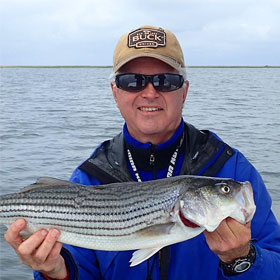A Beginner’s Guide to Crappie and Crappie Fishing
By Ken Schultz
Feb 17, 2022
White crappie and black crappie are popular sportfish; here’s the basics on their ID, habitat, food, habits, and the gear and methods used in crappie fishing
Crappie are the most distinctive and largest members of the Centrarchidae family of sunfish. There are two species, black crappie (Pomoxis nigromaculatus) and white crappie (Pomoxis annularus). Crappie fishing is very popular, as both species are considered excellent food fish and sportfish, and have sweet, white flaky meat. Crappie are plentiful in many places, and creel limits are often liberal. Where permitted, when crappie fishing it does no harm to keep a batch for a delicious pan-fried meal.
Identification
The black crappie and white crappie are silvery olive to bronze with dark spots; on the black crappie the spots are irregularly arranged instead of appearing in seven or eight vertical bands as they do on the white crappie. Both species are laterally compressed and deep-bodied. The best way to differentiate the two species is by counting dorsal fin spines, as the black crappie usually has seven or eight, the white crappie six.
Habitat
Black crappie prefer cooler, deeper, clearer waters with more abundant aquatic vegetation than do white crappie. This includes still backwater lakes, sloughs, creeks, streams, lakes, and ponds. White crappie occur in creek backwaters, slow-flowing streams, sand- and mud-bottomed pools, small to large rivers, and lakes and ponds. They prefer shallower water and can tolerate warmer, more turbid, and slightly alkaline waters. They are usually found near dropoffs, standing timber, brushy cover, or other artificial cover.
Grouping Behavior
Since both species congregate, an angler who comes across one crappie is likely to find others nearby. They are especially active in the evening and early morning, and remain active throughout winter.
Food
Small minnows form a large part of the adult fish’s diet, and they consume the fry of many gamefish species. In southern reservoirs, gizzard or threadfin shad are major forage, and in northern states, insects are dominant. They feed through the winter and are very active under the ice.
Crappie Fishing Basics
- Crappie are mostly minnow eaters, and minnows hide around any kind of brush or weeds to avoid being eaten. The key to how to catch crappie is to focus on fishing wherever minnows hide. That also includes fallen trees, bushes, old piers, flooded weeds, or shoals covered with moss, plus wrecked boats, docks, and planted brushpiles. When these don’t pay off, try drifting with the wind or slow-trolling across a lake, plying a minnow at different depths until you cross paths with a school of roving crappie.
- Small live minnows are popular crappie baits. Although crappie are infrequently caught on various plugs (occasionally on a surface lure or a crankbait), the one artificial that pays off regularly is a small leadhead jig with a soft-plastic body resembling a minnow. The trick is to fish this very slow. Jigs weighing from 1/64- to 1/16-ounce are often better than heavier ones, and this requires using light line.
- Crappie anglers primarily use ultralight spinning or spincasting reels equipped with 4- or 6-pound-test line and 5- to 5 1/2-foot-long rods. Fly rods, telescoping fiberglass rods, and cane poles are popular as well.









